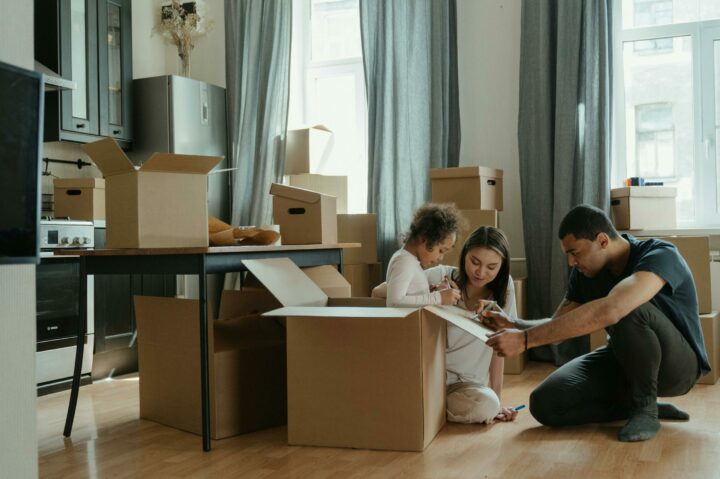The following contribution is from another author.
Moving can be a stressful process, especially when it comes to packing and handling your valuables and fragile items. Whether it’s your grandmother’s antique vase, a piece of expensive artwork, or a collection of delicate glassware, these items require special care to ensure they arrive safely at your new home.
This is particularly true if you’re moving to or from New Jersey, where the hustle and bustle of densely populated areas can add extra layers of complexity to your move. The process might seem daunting, but with the right approach and preparation, you can protect your precious belongings from damage during the move.
Here are some essential steps to pack and handle your valuables and fragile items with care:
Assessing Your Valuables
Before you start packing, it’s important to assess all the valuables and fragile items you plan to move. This list will not only help you stay organized but also ensure that you don’t overlook anything important. Categorize your items based on their fragility and value.
Once you have a clear idea of what needs extra care, you can determine which items require special packing materials or methods. For high-value items, you might also want to consider documenting their condition before packing. Taking photos can be helpful in case you need to file an insurance claim later on.
Hiring a Moving Company
One of the best ways to ensure your valuables and fragile items are handled properly during a move is to hire a local moving company. Professional movers have the experience and expertise to pack and transport delicate items safely, reducing the risk of damage.
When choosing a New Jersey local moving company, look for one that is credible and has great reviews, such as Booth Movers. Additionally, ask about the company’s insurance policy and what it covers. Knowing your items are insured can provide added peace of mind during the move. Make sure the company is licensed and insured, as this provides extra protection in case something goes wrong during the move.
Right Packing Supplies
Having the right packing supplies is crucial when it comes to protecting your valuables and fragile items. Start by gathering sturdy boxes in various sizes. You can purchase these from moving supply stores or sometimes find them for free at local businesses. Make sure the boxes are in good condition and can hold the weight of your items without collapsing.
In addition to boxes, you’ll need bubble wrap, packing paper, and packing peanuts to cushion your fragile items. Bubble wrap is especially good for wrapping delicate items like glassware and ceramics. Packing paper can be used to fill empty spaces in boxes, preventing items from shifting during the move. Don’t forget to have plenty of strong packing tape on hand to secure your boxes. It’s also a good idea to label each box clearly, especially those containing fragile items.
Considerations for High-Value Items
In many cases, it’s worth investing in specialized containers or crates designed specifically for these types of items. These containers offer added protection against impact, moisture, and other potential hazards. For larger items like artwork, use custom crates or reinforced boxes. You can also use corner protectors to shield the edges of paintings or framed items.
Even with the best packing techniques, accidents can happen. Having insurance can provide peace of mind and financial protection in case of damage or loss during the move. Before you pack these items, take photos and document their condition. This documentation will be invaluable if you need to make an insurance claim.
Electronics & Appliances
Packing electronics and appliances requires extra care because these items are often expensive and sensitive to damage. Start by gathering the original boxes and packaging materials if you still have them. These are designed to fit your electronics perfectly and provide the best protection. Wrap each electronic item in bubble wrap to cushion it during the move.
Place the wrapped item in a sturdy box, and fill any gaps with packing peanuts or crumpled packing paper to prevent shifting. Clean the appliance, secure any loose parts, and wrap it in bubble wrap before packing it in a box. If the appliance is too large for a box, consider using moving blankets to protect it during transit.
Proper Packing for Fragile Items
When it comes to packing fragile items, the technique you use is just as important as the materials. Start by wrapping each item individually in bubble wrap or packing paper. For items with irregular shapes, make sure to cover all parts of the item to provide complete protection. Once wrapped, place the item in a box lined with packing paper or bubble wrap.
As you pack, be sure to fill any empty spaces in the box with packing paper or peanuts. This will prevent items from moving around during transit, which is a common cause of breakage. Avoid overpacking the boxes, as this can put too much pressure on the items inside and increase the risk of damage. Instead, use more boxes if necessary, and ensure each box is packed securely but not too tightly.
Transporting Fragile Items
Transporting fragile items requires careful planning and attention to detail. When loading the moving truck, start by placing the heaviest items on the bottom and the lighter, more fragile items on top. Securely strap down any items that could shift during transit, as movement inside the truck can lead to breakage.
If you’re transporting valuable items in your own vehicle, make sure they’re secured and won’t move around during the drive. Throughout the move, drive carefully and avoid sudden stops or sharp turns, which could jostle your belongings. Taking these precautions can significantly reduce the risk of damage to your fragile items during transportation.
Unpacking & Checking
Once you’ve arrived at your new home, it’s important to unpack your fragile items carefully. Start by moving the boxes into the appropriate rooms without opening them immediately. Taking the time to unpack carefully and check for damage will help ensure that all your valuables and fragile items arrive at your new home in good condition.
If you discover any damaged items, document the damage with photos and notes. If you hired a moving company and the damage occurred during the move, contact them right away to report the issue and begin the claims process. If you have insurance on the items, you’ll also want to file a claim with your insurance provider.
Moving your valuables and fragile items doesn’t have to be a stressful experience. Remember to transport your items with care and take your time unpacking once you reach your new home. With careful planning and attention to detail, you can keep your precious belongings safe and secure throughout the moving process.
















